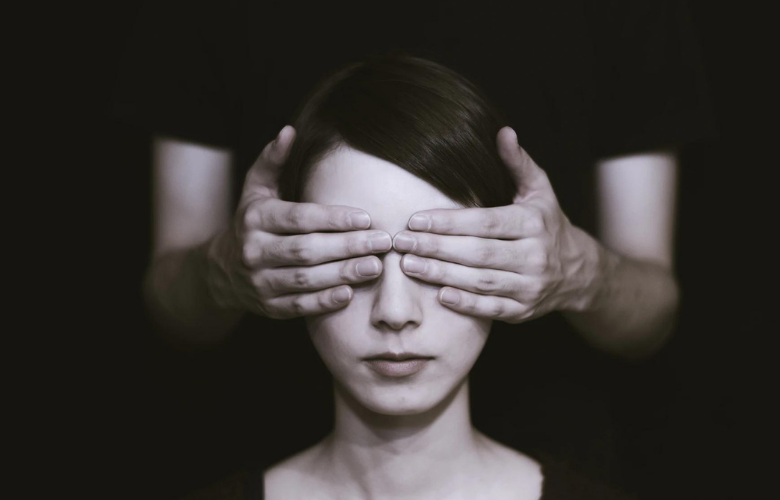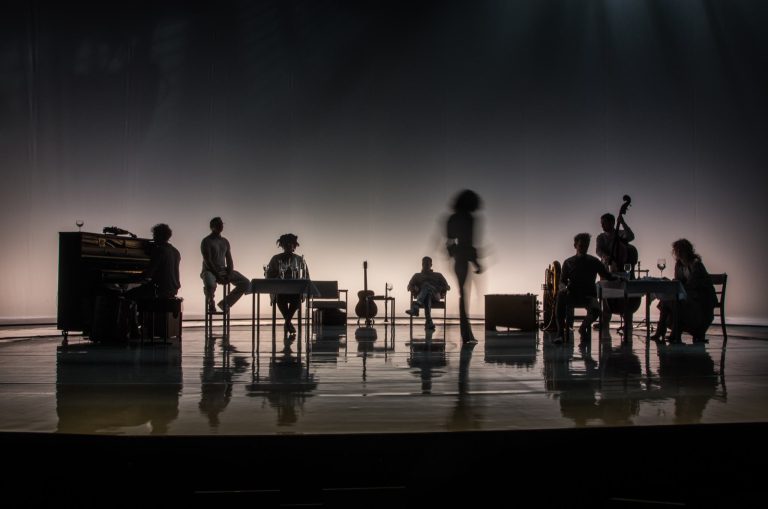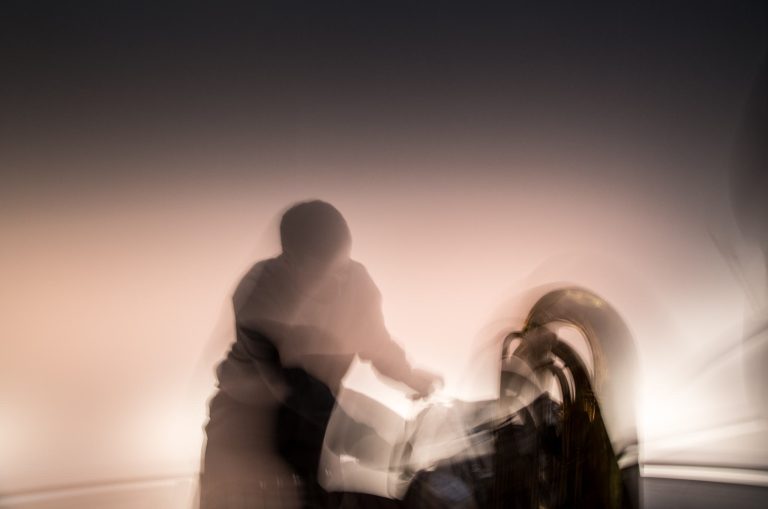
How do you perceive the world without sight? In Bochum, Germany, director Selen Kara and musician Torsten Kindermann immerse themselves in the world of non-sighted people in their evening With Other Eyes. Their theatrical interpretation also means treading on new ground and breaking with conventional ideas.
The program booklet for the musical theater evening With Other Eyes at the Bochum theater is made of strong paper. It has to be, so that the Braille text can be punched in, which will allow blind people to read it as well.
There is a quote from blind musician Ray Charles in the booklet: “I’ve always played for people, not places. Maybe it’s because I can’t see those places.”
One might object that he can’t see people either. But even blind or partially sighted people sometimes talk about being able to see something when they get a precise idea, a feeling. You could say: they visualize an image of their own making.
The extraordinary world premiere of With Other Eyes in Bochum conveys this feeling of what it might be like to see without seeing.
Everything about this theatre experience is a bit different from attending a performance in the traditional sense.

The audience learns that the world of blind people is not as continuous as the world of the sighted. Rather, it is structured by acoustic events that start suddenly and can break off just as suddenly.
As the spectators watch, they can only see silhouettes. Faces or individual mimic, which we would usually take for granted to understand emotions, cannot be seen.
Selen Kara’s play is based strongly on her conversations with visually impaired people.
At one point in her career, she came upon a theatrical production that featured a blind character. It was then Kara realized that she no experience and no way to relate to the lives and daily experiences of blind people.
It gave her the idea for With Other Eyes. To learn and know more about how blind people perceive their world. And to possibly share this experience with an audience as well.
During her pre-production work it quickly became clear that the evening should above all be an acoustic event.
This led to her collaboration with Torsten Kindermann, who took over the musical direction. In Germany, he is well known for his great musical arrangements.
Visually, the theatrical production is stunning in its own right.

In the beginning, you can hardly see anything. The ensemble and the live musicians perform behind a frosted glass wall and a gauze curtain.
Even when they rise, the impression is unclear, shadowy – like the staging photos that the blind photographer Silja Korn took with the help of her intuition.
The stage area remains immersed in strong backlighting until the end. Colors appear weak or disappear completely, facial features and facial expressions can only be guessed at.
Orientation is provided by the people on the stage, who measure the space – by Anne Rietmeijer, for example, who describes it in words.
The pianist Joerg Siebenhaar, who like almost everyone on stage plays several instruments, is blind himself.
When it is his turn to speak up, he says, “I can change my eye color because I have glass eyes.”

The others also describe their appearance and Karin Moog provides an audio description of what is happening.
One senses how a spatial impression is created in the heads of blind people through the acoustic stimuli.
The text of the piece consists of short life stories or impressions from the world of blind people. They talk about their blindness. How they perceive people. And how they deal with help and structure their everyday lives.
The play’s soundtrack and score include many well-known songs. Simon & Garfunkel’s The Sound of Silence, True Colors by Cindy Lauper, and Is There Anyone Out There by Ray Charles are obvious.
Other parts of the musical composition and arrangement are less well known. But the accompanying sound of the play flows in such a harmonic and intriguing way, it enhances the feeling of the audience that they are indeed seeing With Other Eyes.
Original article by “Wie Blinde Sehen” by Max Florian Kuehlem on Nachtkritik.de
Schauspielhaus (Theatre) Bochum Official Website
Opera Village Africa – a Vision by Director Christoph Schlingensief
Wunika Mukan, Nigeria-Based Curator, on Giving African Artists a Voice


Liam Klenk was born in Central Europe and has since lived on four continents. Liam has always been engaged in creative pursuits, ranging from photography and graphic design, to writing short stories and poetry, to working in theatre and shows. In 2016, Liam published his first book and memoir, 'Paralian'.
Read Full Profile© 2021 TheatreArtLife. All rights reserved.

Thank you so much for reading, but you have now reached your free article limit for this month.
Our contributors are currently writing more articles for you to enjoy.
To keep reading, all you have to do is become a subscriber and then you can read unlimited articles anytime.
Your investment will help us continue to ignite connections across the globe in live entertainment and build this community for industry professionals.